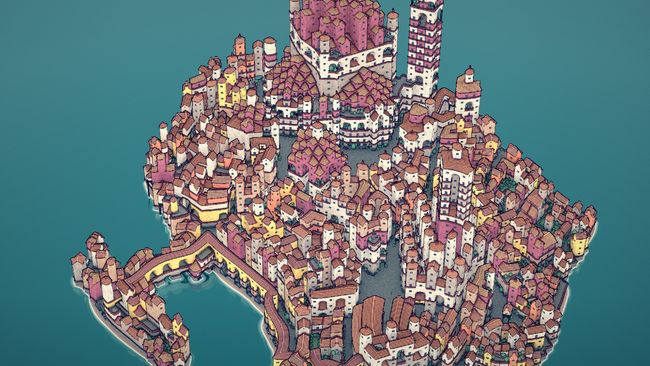

So, I've provided some shelter from the wind as well as a nice wishbone pier which can serve as a jetty, because obviously there will be ships arriving. Build a row of houses and they clump to make a terrace, build in a square(ish) pattern and they make a bigger kind of house. But exactly what kind of building depends on what's around it. You know if you build in the water that a kind of harbour block will appear, with nice red trim and fences for safety around the top, and you know if you build on top of it, a building will appear. What I love most is how you're never sure what's going to appear. Availability: Steam Early Access for £4.80.Even if you try to build a square, the edges bow and warp. It's as if the game adheres more to the warm, wobbly lines of your imagination than it does the cold angles of real life. You cannot even build in a straight line. There's no discernible aim to the game other than to make your town look nice. It's a game about building a town and the only buttons you have are to build and unbuild and select a colour.
#Townscaper sculptor code#
“It’s open-source, just like the library I used.” The code can be found on Github.Townscaper might be about the simplest game I've ever played. “If somebody decides to make Wordle 6-letter words and 7 attempts, my tool can be easily modified,” he tells Polygon. But if the Times does radically alter Wordle, he invites other programmers to play with the tool. As long as they use the same functionality, he says, his tool should continue to work. He says he doesn’t blame Wordle creator Josh Wardle for selling it off, but he suspects the move to the Times could kill users’ interest in the game if the company changes access to it or how it operates. Tarmo does think it’s possible that Wordle being sold to The New York Times will end people’s easy access to and interest in the game. “Converting the objects to string was the most difficult part, and luckily, it was already solved,” he says.įrom there, he added options that could parse Wordle’s grey or black boxes in different ways depending on user input - you can check boxes to fill in empty spaces, or ground spaces, so you don’t wind up with a house on stilts, in case that offends your sensibilities for some reason. Tarmo says he found an existing Github library that would convert Javascript objects, or JSONs - in this case, Wordle’s green-and-yellow boxes - to a format that Townscaper would accept. The developer, Tarmo Annus, who goes by on Twitter and Tumblr, tells Polygon he got the idea when he saw Townscaper dev Oskar Stålberg joking online about possibly requesting this kind of tool from Wordle. You can even make up your own patterns by clicking on the parsed boxes in the tool to change their colors, then generate new houses with your results. There’s a meditative calmness to Townscaper creations, and this tool personalizes them with little effort. They’re also gently animated, with ripples in the water and resident birds that, over time, will move from one roof to another. These little houses are interactive: You can click and drag to move the camera and change the angle. Image: Tarno Annus via Townscaper and Polygon The Wordle-to- Townscaper tool is even simpler: After finishing a Wordle game, click the “Share” button to automatically load your results into your clipboard, then paste them into the “tweet contents” box on the Wordle-to- Townscaper page, click “parse” to interpret them, and “generate” for a link to follow to the results. Townscaper, which the developer describes on Steam as “‘more of a toy than a game,” lets users build elaborate fantasy villages through a simple point-and-click interface.
#Townscaper sculptor free#
Now an Estonian programmer has published a simple, easy-to-use free tool that uses Wordle’s own social-media function to convert play results into beautiful little animated houses via a city-design program called Townscaper.

But it takes a certain amount of time, obsession, and skill to convert your Wordle score into a berry pie. Some users are getting more creative about celebrating their successes, turning their Wordle results into paintings, soft sculpture, or digital art. With so many people routinely putting their daily results from the viral word-guessing game Wordle on social media, the influx of near-identical collections of green and yellow boxes has gotten a little tedious.


 0 kommentar(er)
0 kommentar(er)
